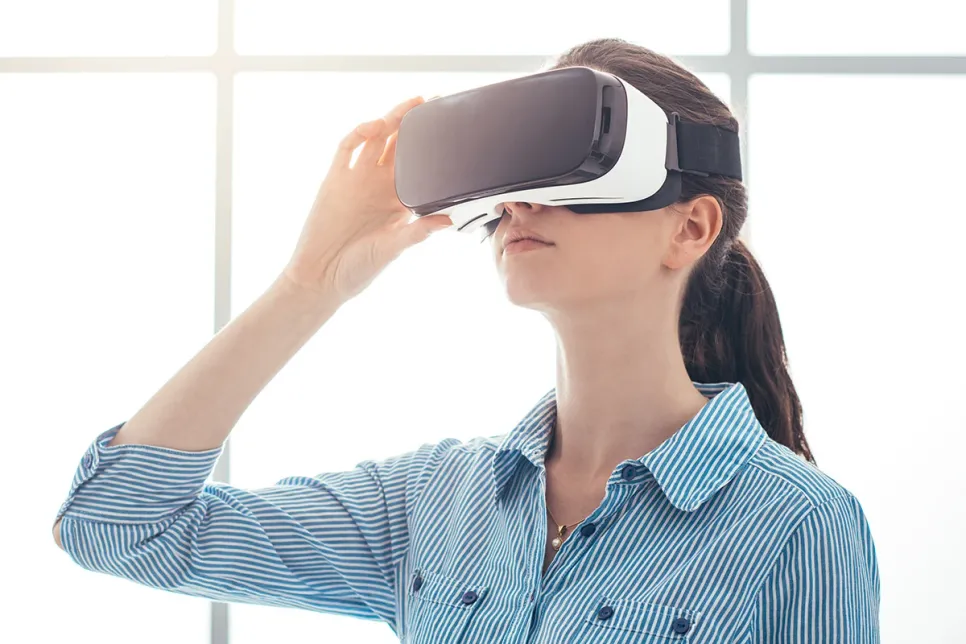VR Shipments Fall in 1H25; AR Smart Glasses Poised for Growth
Global VR headset shipments fell 14% in the first half of 2025 amid continued weakness in consumer demand, according to Counterpoint Research.

Global VR headset shipments fell 14% in the first half of 2025 amid continued weakness in consumer demand, according to Counterpoint Research. The competitive landscape has remained relatively stable, with few new product launches from major OEMs. Meta maintained its clear leadership, holding roughly 80% market share.
In contrast, global shipments of augmented reality (AR) smart glasses grew 50%, signaling a recovery in market sentiment, primarily driven by new product upgrades from key OEMs Xreal and RayNeo. By segment, Birdbath-based, video-centric AR smart glasses remained dominant, accounting for 78% of shipments, followed by waveguide-based, information-display AR smart glasses with roughly 17% share. The average selling price (ASP) of waveguide-based AR smart glasses was about 27% higher than that of the more mature Birdbath-based products.
In the Birdbath-based product segment, the Xreal One was the top-selling model in H1 2025, followed by the RayNeo Air 3s and RayNeo Air 3. The Xreal One delivers a native 3 Degree of Freedom (DoF) experience, powered by Xreal’s self-developed X1 co-processor, and features an expanded 50° field of view (FoV). The RayNeo Air 3s, equipped with SeeYa’s 0.6-inch Micro-OLED displays and the upgraded Birdbath system, reduces light leakage, supports peak brightness of up to 1,200 nits, and is offered at a competitive price of CNY 1,499 (about $269).
In the waveguide-based segment, Even Realities’ G1, a binocular monochrome AR smart glasses powered by JBD’s green MicroLED light engine and a diffractive waveguide lens, outperformed other models despite its relatively premium $599 price. Its sleek design, resembling regular prescription glasses, and ultra-lightweight build of around 40 grams (or less) make it comfortable for long-hour wear, though this comes at the cost of omitting components such as cameras and speakers. Even Realities’ G1 initially gained traction through its own online store, and the company has since expanded its offline presence across Europe, North America, and Asia-Pacific (APAC).
As for the competitive landscape, Xreal and RayNeo, pioneers in the Birdbath-based segment, commanded a combined share of over 60% in the global AR smart glasses market in 1H25. RayNeo overtook its rivals in 2Q25 to become the top-selling brand, fuelled by a broad lineup of new products unveiled at its annual event. Highlights included the RayNeo Air 3s/Air 3s Pro Birdbath-based glasses and the RayNeo X3 Pro, a premium AR model featuring Qualcomm’s AR1 Gen 1 processor, a nano-lithography-etched waveguide co-developed with Applied Materials, and JBD’s full-color MicroLED light engine. In addition, the Rokid Glasses have also been a much-awaited waveguide-based AR model. However, it faced shipment delays due to product development and manufacturing challenges, with mass shipments only starting in 3Q25.
Juniper Research expects competition in the global AR smart glasses market to intensify in H2, fuelled by the production ramp-up of innovative products across both video-centric and waveguide-based segments. In the video-centric category, the Xreal One Pro, featuring innovative “flat-prism” technology that expands the FoV to 57°, is slated to ramp up production in 3Q25 to meet strong market demand, while VITURE’s newly launched Luma glasses series is set to challenge Xreal’s lead. In the waveguide-based segment, output of the Rokid Glasses is expected to grow, while the market will also be energized by the launches of the high-profile Meta Ray-Ban Display and Meta Neural Band, and Alibaba’s Quark “AR+AI” Glasses. Driven by these exciting new products, Juniper Research expects the share of waveguide-based glasses in the global AR market to continue rising.